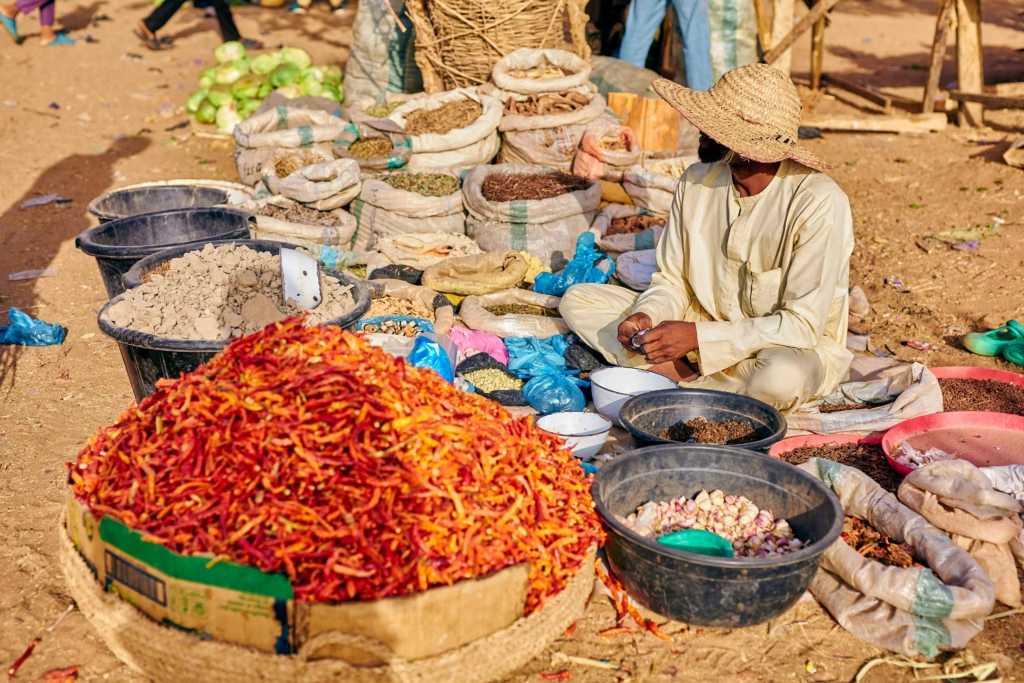
Africa’s culinary roots run deep. From the smoky flavors of suya in Nigeria to the fiery berbere of Ethiopia and the fragrant ras el hanout in Morocco, spices are at the heart of African food culture. But beyond enriching traditional dishes, African spices are now carving out space in global kitchens, grocery aisles, and gourmet restaurants.
The African spices export market is on the rise, with increasing interest from global food brands, health-conscious consumers, and manufacturers seeking bold, authentic, and natural ingredients. As demand for clean-label and ethically sourced products grows, Africa’s spice producers are beginning to play a more prominent role on the world stage.
This blog explores the rise of African spices in the global export market and what makes them so appealing to buyers worldwide.
1. A Rich History of Spice Cultivation
Africa has always had a strong relationship with spices. For centuries, indigenous communities across the continent have cultivated, traded, and cooked with a wide variety of aromatic herbs and seeds. Countries such as Ethiopia, Ghana, Nigeria, Tanzania, Madagascar, and Egypt have long histories of spice production, both for domestic use and regional trade.
Now, with better infrastructure, logistics, and global exposure, African spices export is evolving from small-scale trade to large-volume international commerce. Spices like cardamom, ginger, coriander, cinnamon, turmeric, and black pepper grown across the continent are being recognized for their superior flavor, organic growing methods, and cultural value.
2. What Makes African Spices So Unique?
One reason behind the growing global demand is the unique character of spices grown in African soils. The continent’s rich biodiversity, varied climates, and traditional farming methods give African spices a distinct flavor profile that sets them apart from their Asian or Latin American counterparts.
For example:
- Ethiopian Berbere blends paprika, fenugreek, and chili with a depth and heat that’s uniquely African.
- Madagascar vanilla, although technically a flavoring, is prized for its superior quality and fragrance.
- West African grains of paradise, an alternative to black pepper, offer a peppery yet citrusy flavor now popular in gourmet cooking.
These unique traits are difficult to replicate elsewhere, giving African spices an edge in the premium spice export segment.
3. Rise of Ethical and Sustainable Sourcing
Modern consumers want more than just taste; they also want to know where their food comes from and how it’s produced. This trend is having a direct impact on the African spices export market. Buyers from Europe, North America, and Asia are now seeking partnerships with suppliers who offer traceable, ethically sourced products.
Many African spice producers, particularly cooperatives and smallholder networks, are adopting sustainable farming practices. These include organic cultivation, regenerative agriculture, and fair trade models that prioritize farmer welfare.
Companies that prioritize sustainability and transparency in their sourcing practices are helping transform the perception of African exports—no longer seen as informal or inconsistent, but as reliable, high-quality and aligned with global values.
4. Key Players in African Spices Export
Several African countries are emerging as key exporters in the spice sector:
- Ethiopia is renowned for its native spice blends like mitmita and berbere and also exports turmeric, coriander, and ginger.
- Tanzania and Uganda are gaining ground with high-quality vanilla, cloves, and cardamom.
- Ghana and Nigeria are leading in dried chili peppers, ginger, and grains of paradise.
- Madagascar remains a major player in vanilla, cinnamon, and clove exports.
These countries are supported by growing investment in agro-processing facilities, improved access to certification (like organic and fair-trade labels), and partnerships with international food brands.
5. Challenges Facing the Sector
Despite the opportunities, the African spices export sector faces several hurdles. Many smallholder farmers still lack the technical knowledge or resources to meet strict global quality standards. Issues such as contamination, poor storage, and inconsistent processing can limit export potential.
Infrastructure and logistics can also be a challenge, especially in remote farming regions where transport and cold storage are limited. Furthermore, gaining certifications like USDA Organic or EU Organic can be costly and complex, making it difficult for smaller farmers to access high-value export markets.
However, with support from both governments and private sector investors, many of these barriers are being addressed through training programs, digital traceability tools, and market access initiatives.
6. Technology and Traceability Driving Growth
One of the key trends shaping the future of African spices export is traceability. Exporters are increasingly using digital tools to track their spices from farm to port. This not only ensures compliance with international safety standards but also builds trust with buyers who want full transparency on sourcing.
Blockchain and mobile apps are being tested in regions like East Africa to allow smallholder farmers to digitally record harvesting, drying, and packing processes. Buyers can then access this data in real time, improving both food safety and brand credibility.
Technology is also helping improve yields and reduce post-harvest losses, increasing the profitability of spice farming in Africa.
7. Looking Ahead: What’s Next for African Spices?
The global market for herbs and spices is expected to reach over $20 billion by 2030, and Africa is well positioned to increase its share of that pie. The continent’s spices are no longer just local staples—they are now valuable international commodities.
For exporters, the path forward includes:
- Strengthening quality control and food safety compliance
- Investing in packaging, branding, and direct-to-market strategies
- Building long-term relationships with ethical buyers and brands
- Scaling up processing at the source to retain more value locally
With the right support and continued innovation, African spices export could become one of the most vibrant and profitable sectors in the continent’s agri-business landscape.
Conclusion
Africa’s diverse, flavorful spices are no longer a hidden treasure—they are becoming a globally recognized force in the food industry. With unique taste profiles, growing demand for natural products, and increased focus on sustainability, the African spices export sector is poised for continued growth.
As more international buyers seek out ethical and traceable products, African farmers and exporters have the opportunity to build stronger, more transparent supply chains that benefit everyone—from the soil to the shelf.











Add comment